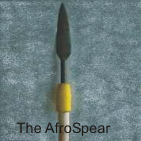Raquel Christie in the American Journalism Review (January 25, 2008) attempts to write a revisionist history of the Jena Six story, alleging that although nooses were hung in a tree on public school property, nonetheless the public and media reaction to the incident may have been symptomatic of "paranoia", according to this revisionist analysis. The story quotes Keith Woods, Dean of Faculty at the Poynter Institute who says,
If we are a nation of paranoid people, we need to know that. And so if it is pure paranoia that's driving the busloads of people that drive down to Jena, some of us need to report that . . . "
We Blacks are certainly used to the suggestion that our objection to the hanging of nooses in trees on public school property amounts to "pure paranoia". We get more of this from the Raqual Christie article. However, our familiarity with the history of lynching makes it impossible for Blacks to discount fear and loathing and anger at nooses as "pure paranoia."

